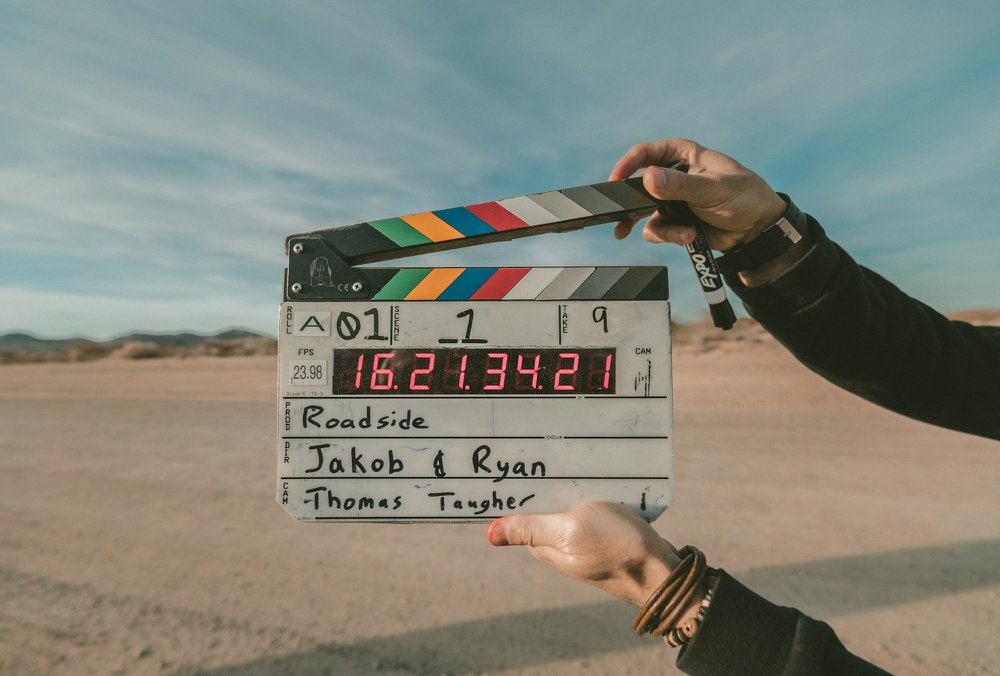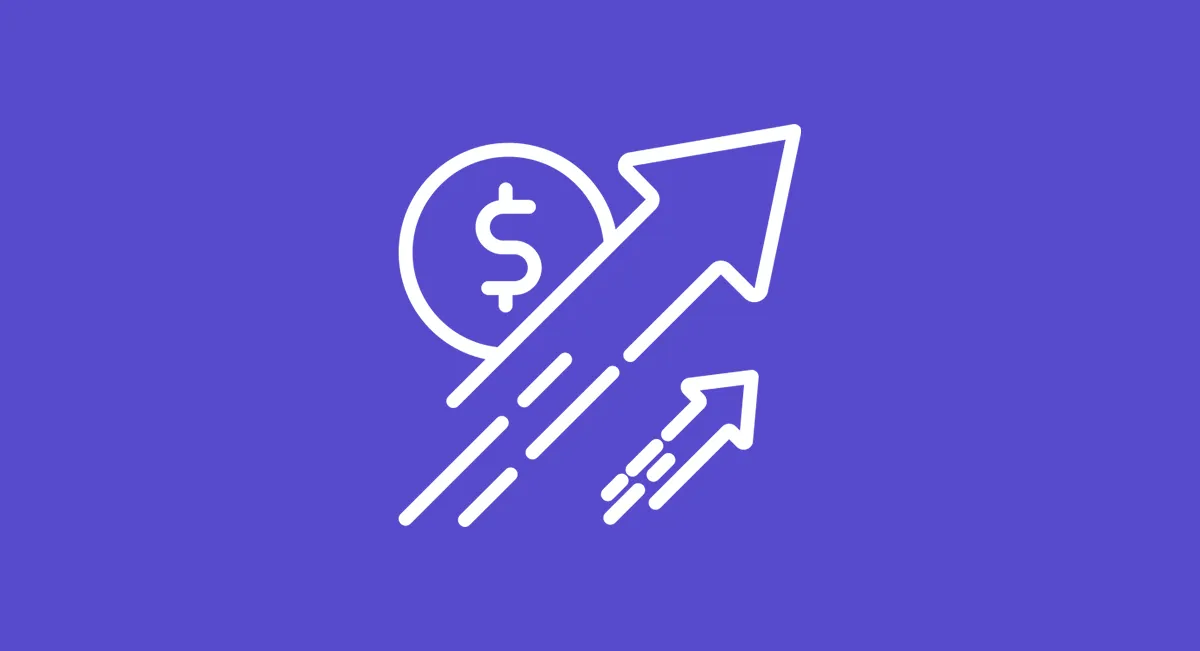Contemplating whether to produce videos in-house or delegate to a video agency? You’re not the only one asking that question.
Video isn’t going anywhere. According to HubSpot’s 2025 Marketing Trends Report, 87% of marketers say video has directly increased sales. And with more audiences preferring to watch rather than read, it’s clear that video is the content format people engage with most.
That leaves many businesses facing the same dilemma: Should you outsource production or keep it in-house?
In this post, we’ll put our 16+ years of video production experience to work. You’ll see the pros and cons of each approach, in-house vs agency and get a practical framework to decide what makes sense for your business.
Video Agency vs. In-House Production

Before we weigh the pros and cons of in-house vs agency video production, it’s worth looking at what actually goes into making a video. Spoiler: it’s a lot more than pressing a record on a camera.
A typical project might include:
- Building a video content strategy that supports your larger marketing efforts
- Preparing a clear creative brief that aligns with your business strategy
- Storyboarding concepts with writers, designers, and animators
- Writing scripts that balance brand voice with audience needs
- Scouting locations or planning set design to shoot the video
- Setting up lighting, sound, and production gear
- Filming live action or creating motion graphics and animation
- Editing raw footage into a polished story
- Adding graphics, branded visuals, or special effects
Each step requires specialized skills, the right tools, and time. Storyboarding alone often calls for input from creative and strategy team members, showing just how much collaboration is required.
This is why so many companies face the in-house vs outsourcing dilemma. Handling all of this with a small internal team can be time-consuming, pull staff away from core business functions, and stretch limited resources. On the other hand, partnering with a marketing agency or video partner gives you access to a larger range of expertise, technology, and project management support.
Benefits of In-House Video Production

Your in-house team already knows your products, services, and company culture better than anyone else. That kind of built-in knowledge makes it easier to create videos that feel authentic and directly connected to your audience.
You also maintain complete control over the process. From timelines to creative direction, your team can move quickly without waiting on external partners. If something changes at the last minute, it’s easier to adjust without extra costs.
There’s also a cost savings factor. Once you’ve purchased cameras, lighting, or animation software, those assets can be reused across projects. For businesses that produce regular content, culture clips, product demos, or social videos, this can be more cost-effective than outsourcing everything.
And don’t underestimate the power of authenticity. Some of the most engaging videos aren’t heavily polished but instead come across as genuine. That’s why many small businesses lean into content like:
- Behind-the-scenes clips that show company culture
- Quick-turn updates made directly by staff
- Customer testimonials captured on the spot
These types of videos can significantly impact trust and engagement by feeling more human and relatable.
Cons of In-House Video Production
Producing videos in-house comes with real challenges that can slow down projects or stretch your resources.
One of the biggest issues is limited resources. A small internal team may understand your brand well, but it often lacks the specialized skills needed for professional production. Cinematography, animation, and sound design all require expertise. When team members are asked to cover too many roles, burnout is almost inevitable.
Another drawback is perspective. Being too close to the brand makes it hard to know what will truly resonate with customers. In-house teams sometimes lean on jargon or overly polished messaging that feels disconnected from real audiences.
Video production is also time-consuming. Coordinating gear, schedules, and post-production tasks can pull staff away from core business functions. Without enough experience, projects are more likely to:
- Miss deadlines
- Run over budget
- Drain staff focus from other marketing tasks
Finally, overhead costs can grow quickly. Salaries, office space, equipment, and training new employees all add up. For companies that only produce videos occasionally, those investments rarely make sense long term.
A LinkedIn B2B study also shows that companies producing video internally often struggle with scale, with59% citing lack of bandwidth as their top challenge.
Benefits of Outsourcing to a Video Agency

Partnering with a video agency gives you advantages that an in-house marketing team usually cannot match.
One of the biggest benefits is access to specialized skills. Agencies bring together writers, directors, animators, and editors who focus solely on video. Instead of asking one or two team members to juggle every role, you get a team of highly skilled professionals who each handle their part of the process.
Agencies also provide scalability. If you need to launch a new campaign, produce multiple assets, or adapt quickly to market shifts, an outsourced team can respond without overloading your staff. Some businesses treat agencies as an extension of their digital marketing strategy, especially when aiming for rapid growth.
Technology is another edge. A marketing agency invests in professional-grade cameras, audio equipment, editing tools, and animation software that would be too costly for most companies to purchase and maintain. The same goes for specialized training in areas like:
- 2D/3D animation
- Motion graphics
- Advanced post-production techniques
Efficiency also plays a big role. An experienced partner can scope projects accurately, anticipate challenges, and uphold high quality standards while helping you save money by avoiding costly mistakes. Since agencies work with multiple clients across industries, they bring a wide range of proven solutions to the table.
Statista data shows that global video ad spending is projected to surpass $120 billion in 2025, reflecting the growing reliance on professional production to stand out in crowded markets.
Cons of Outsourcing to a Video Agency
Outsourcing comes with plenty of advantages, but there are trade-offs to consider.
The first challenge is control. Working with external partners means you don’t always have the same direct control over creative decisions or timelines as you would with an in-house team. Revisions may take longer, and rescheduling shoots can introduce extra cost considerations.
One issue we see often is finding the right fit. Reviewing proposals, comparing budgets, and onboarding an outsourcing company takes time. If expectations aren’t set clearly, you may run into:
- Delays while the agency learns your brand voice
- Less focus if they’re managing multiple clients at once
- Misalignment on creative direction
And of course, cost is always part of the equation. A polished agency video often carries a higher price tag than producing content in-house. But that price usually includes access to specialized skills, professional-grade equipment, and the ability to scale quickly. In many cases, companies find that outsourcing helps them save money over the long run by avoiding mistakes, missed deadlines, and wasted internal resources.
At Levitate, we address these concerns with clear communication, transparent pricing, and a proven process designed to minimize risks. No surprises, no wasted time.
When to Use Each Option
So, when should you keep video production in-house, and when is it smarter to work with a video agency?
In-house production makes sense when speed and authenticity are the priority. Quick-turn projects like social media clips, company culture highlights, customer testimonials, or internal updates are a natural fit for your in house marketing team. These videos benefit from brand familiarity and the ability to respond quickly without extra costs. For many small businesses, this approach offers lower cost and greater control over day-to-day content.
Outsourcing is often the better choice when the stakes are higher. Brand films, homepage videos, product explainers, training assets, and 2D or 3D animation usually require specialized skills and higher production value. Working with an outsourced team allows you to scale quickly, align with your broader marketing campaigns, and free up your staff to focus on other business functions.
For many organizations, a hybrid model delivers the best of both worlds. Scrappy, day-to-day content can be kept in-house, while high-impact projects are handled by an agency. This balance helps save money, increase efficiency, and make sure important campaigns get the professional polish they deserve.
Frequently Asked Questions
What are the main pros and cons of producing video in-house?
The biggest pros are direct control, lower long-term costs, and a better understanding of your company culture. The cons are limited assets, fewer specialized skills, and projects that are often more time consuming.
When does outsourcing video production make the most sense?
Outsourcing is the smarter choice when you need high production value, specialized training, or the ability to scale quickly. Brand films, explainer videos, and 2D/3D animation often require an outsourced team with the right tools. Explore our 2D animation styles guide for examples of what agencies can deliver.
What is the difference between in-house vs agency video production?
With in-house, your internal team manages production using in-house resources. With agency, you collaborate with external partners who bring a broader range of talent and equipment. The choice often comes down to cost considerations and scalability.
Can a hybrid model between in-house and outsourced teams work?
Yes. Many brands keep strategy or scripting in-house and outsource execution to stay efficient. The case study on Linden Lab shows how collaboration between internal teams and Levitate delivered strong results.
How do I choose between in-house vs outsourcing for my business?
Start with your business marketing strategy. If authenticity and speed are most important, keep it in-house. If your goals require scale, polish, or advanced production techniques, outsourcing is more cost effective. Many businesses mix both approaches for the best results.
Final Verdict
The in-house vs agency decision does not have to be all or nothing. For many businesses, the best solution is a hybrid model.
Your in house marketing team can take on fast, authentic content like social clips, customer testimonials, and company culture highlights. These projects keep costs low and allow you to respond quickly. On the other hand, a professional agency brings the specialized skills, advanced equipment, and scalability needed for brand films, explainers, training assets, and multi-asset campaigns that support business growth.
Over time, both sides get better. Internal staff build confidence and learn new techniques, while your agency develops a deeper understanding of your brand. That collaboration leads to higher-quality work, greater efficiency, and stronger results.
At Levitate Media, we make this balance simple. Whether you want to keep projects in-house, outsource to an outsourced team, or scale quickly with a trusted video partner, our process adapts to your needs. No surprises. No wasted time. Just effective communication and videos that deliver.
If you’re ready to cut the guesswork out of video production, let’s talk. Explore our video services or connect with us to start planning your next project.









